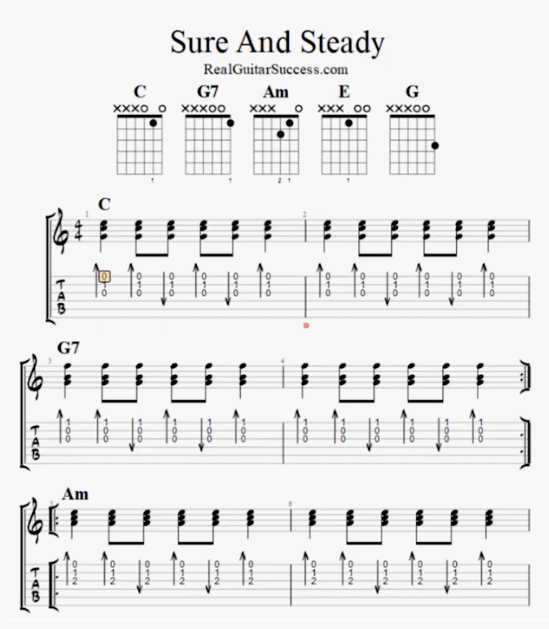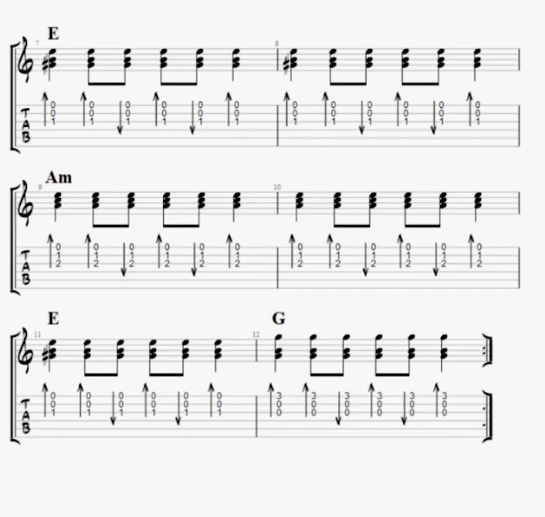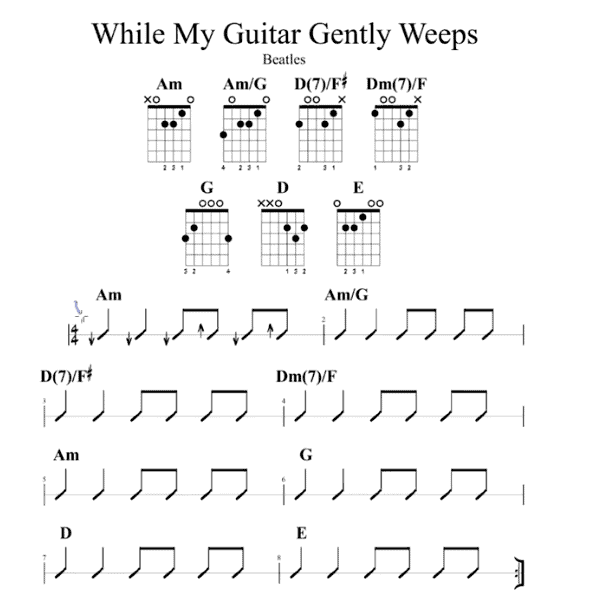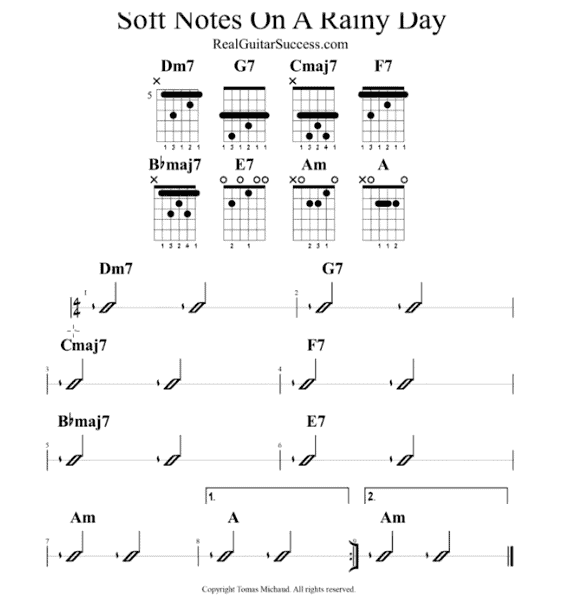Reading Song Charts For Guitar
Most guitar players don't read sheet music. Instead, we have various other tools and methods to know what to play. One of those is called a song chart (also known as a rhythm chart). Some of these song charts are simple, and some are more complex. But it gives you the critical information you need as a guitar player to know what chord to play and how many times to play it.
Song Chart Basics
Let's start off with the most important detail; what chord you'll play. Take a look below. We have a chord followed by slashes. These are separated by vertical lines. When you see a chord an say 3 slashes, that means you play the chord 4 times (the chord name counts as a strum). Each blocked in section is a measure.
||: G / / / | C / / / | G / / / | / / / / : ||
You can see that we have 4 strums of G, then 4 strums of C, then 4 more strums of G. The last measure doesn't have any chord name. When you see this, it's implied that you'll still play the chord from the previous measure. So this last measure is again 4 strums of the G chord.
The double lines with the colon at the end signal that you repeat that whole section.
This is the simplified version and I still use this to quickly jot down song ideas. Here is a more complicated version that gives you more information.
Strum Pattern Song Chart
You can see that we now have the time signature listed out, which is very helpful. This song is in 3/4 (three-four) time. That means there are 3 beats per measure. The markings in the measures are the strum pattern. This is really important when you're learning to play a song.
The mark by itself is a quarter note. The two marks that are linked are eighth notes. The first measure would be a quarter note followed by two eighth note strums:
One-Two-And-Three-And, One-Two-And-Three-And
The chords are still listed by where they are played. In this song most of the chord changes happen on the first beat of the measure. But you'll notice on the first to last measure there's a chord change in the middle.
These charts can also include the lyrics. This can be helpful for keeping your place. The end of the song has the ":||" marking, signaling a repeat back to where the "||:" marking is. Now, on this specific chart I think the starting marks should be all the way at the first measure, not the second measure.
Chord And Tab Version


Now we're looking at a more informative chart. You'll see right from the beginning that this has some sheet music listed. And right under the sheet music it has tablature. The sheet music has the time signature, the chords, and the rhythm pattern.
The sheet music line and tablature line are both the same thing. The bracket on the left is telling us that it's the same music, just written in different mediums.
Up at the top we have chord diagrams that tell us the chord voicing being used for each chord. These are also called chord charts, but I like to use chord diagram because it's less confusing.
Lastly, notice the arrows on the tablature. These are telling you if there is a down strum or an up strum. When the arrows are pointing up, that indicates a down strum. I know, it sounds backwards. But it lines up with the tabs, since they show your strings low to high.
The repeat signs are a little different here. You can see on the end of the second line that there are repeat signs, but no other starting "||:" lines. When you see this it means you go all the way back to the start of the song. When you get to the repeat lines the second time you just keep playing since you've already used it.
Notice on the first Am measure that it has the repeat starting sign. This is where you start your next repeating section when you come across the next repeat sign. In this chart it's all the way at the end of the song.
Alternate Chord Chart Version


Here are a couple more versions you might see. The first should be pretty familiar by now. It has elements of the charts we've looked at. The second chart has something interesting at the end.
The 1 with the box on top can be thought of as a gate. The number indicates whichever time you go on to this tune, that's when you can go through that gate. So the first time through you stop at the box with the 1, then go back to the beginning. The second time through you skip the 1 (you already went through that gate) and jump to the box with the 2 in it.
----
I hope you enjoyed this introduction the song charts! There are so many different versions, but they all kind of use the same ideas. So once you learn the basics you can read just about any of them.
Is there a version of a song chart I didn't include that you want to know more about? Let me know in the comments! And let me know if there are any other lessons you'd like to see as part of my 30 day guitar coaching challenge.
